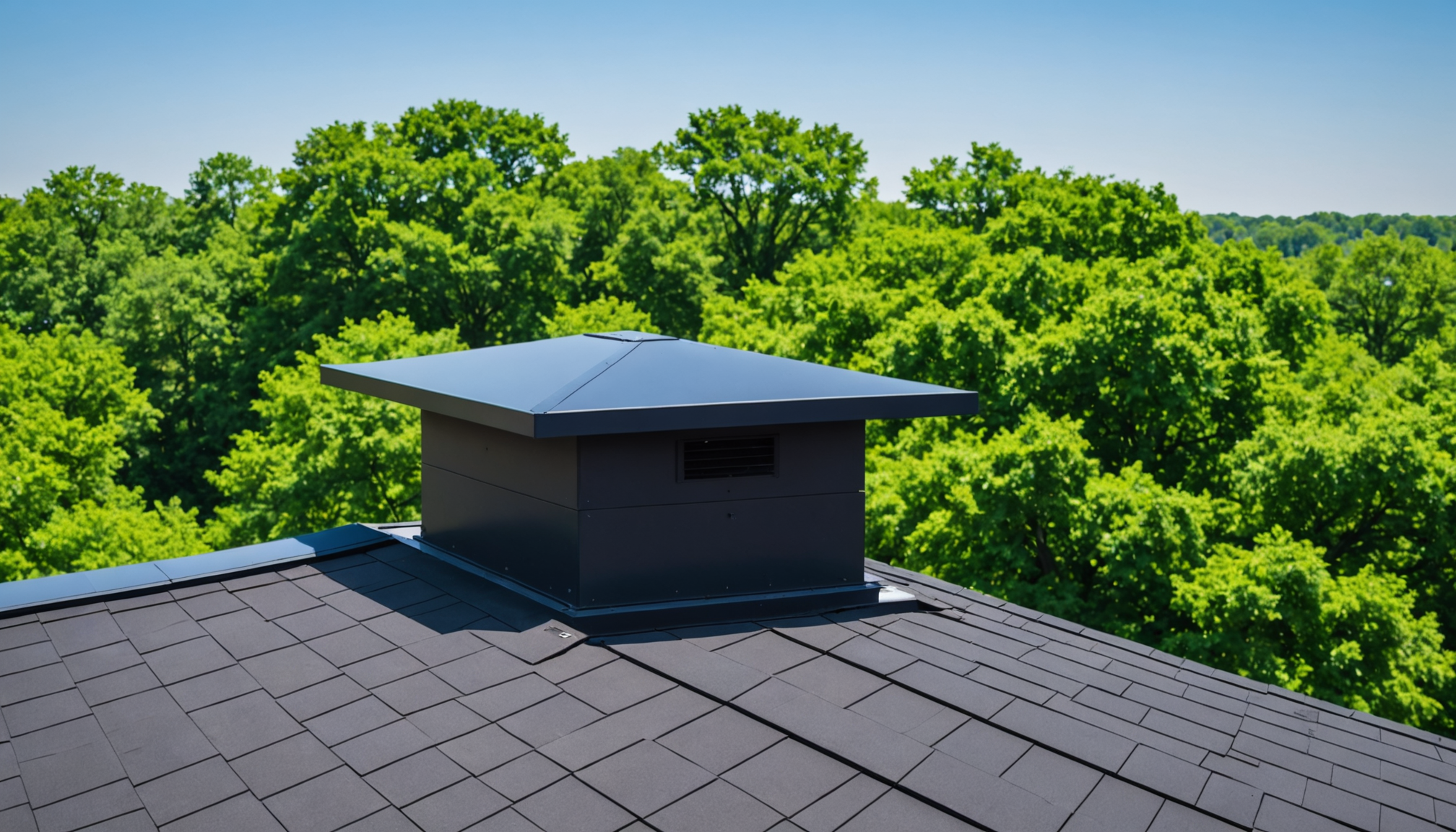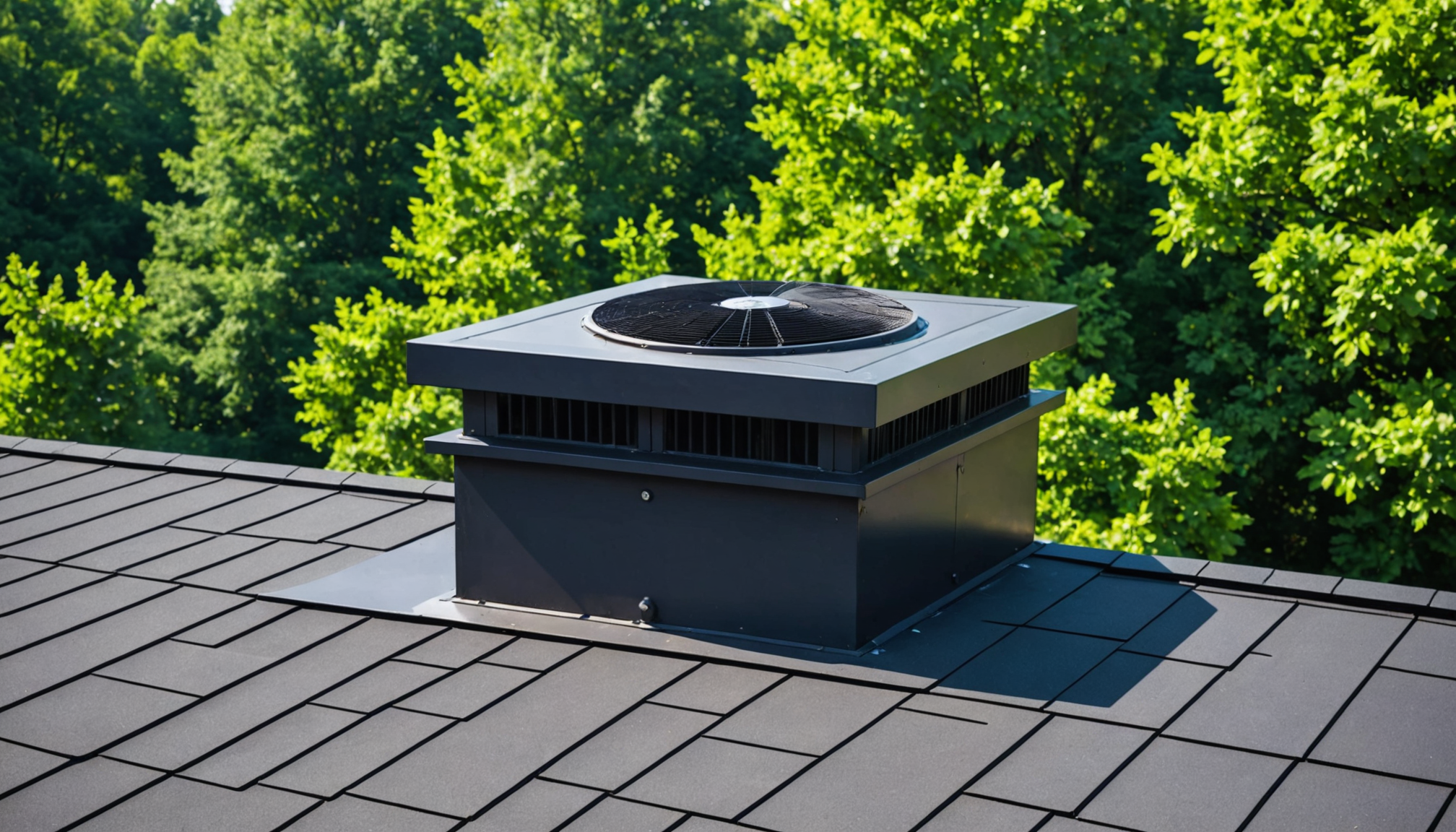Attic ventilation plays a crucial role in maintaining the health and efficiency of a home’s roofing system, particularly in climates like that of St. Louis, where temperatures can be extreme. Proper attic ventilation helps to regulate temperature, prevent moisture buildup, and extend the lifespan of roofing materials. One popular and effective type of attic ventilation is the ridge vent. This relatively simple yet highly efficient part is essential in ensuring good airflow through the attic space, making homes more energy-efficient and comfortable while guarding against costly structural issues.
Ridge vents are a form of passive ventilation placed along the peak of a roof, designed to allow hot, humid air to escape the attic naturally. By creating a continuous space for air to move out of the attic, ridge vents work synergistically with other vents, such as soffit vents, to promote a balanced system of intake and exhaust. This process can significantly contribute to the stability of your home’s inner environment while allowing for improved energy performance and extending the life of the roofing materials.
The installation process for ridge vents is crucial to ensuring their effectiveness. Improper installation can result in inefficiencies or even damage. Contractors in St. Louis recognize the importance of expert installation and maintenance, acknowledging the region’s unique weather patterns that range from humid summers to damp and cold winters. The installation typically involves cutting a narrow section along the roof peak to allow the ridge vent to be fitted securely. The ridge vent is then affixed in place, often covered with a quality shingle-over vent system that blends seamlessly with the roofing materials for a more aesthetically pleasing finish.
Ridge vents offer several benefits that can dramatically enhance the overall performance of a roofing system. They are renowned for their ability to uniformly ventilate an attic, ensuring that no single area remains moist or overheated—a critical advantage in climates like St. Louis’. In addition, homes with ridge vents often experience lower energy bills due to the optimization of heating and cooling efficiency. By reducing the need for air conditioning and heating systems to work overtime, ridge vents help in decreasing energy consumption, benefiting both the homeowner’s wallet and the environment.
The impact of ridge vent installation extends beyond just improved ventilation. Properly installed ridge vents can prevent roof rot and reduce the likelihood of ice dams forming during the winter months. By facilitating the escape of moisture-laden air, they avert the buildup of condensation, which can lead to structural weakness over time. Additionally, ridge vents—when combined with soffit vents—enhance the air exchange process, promoting a gentle movement of air throughout the attic. This continuous airflow is vital in maintaining even attic temperatures, which protects roofing materials from the stress caused by temperature variations.
Ultimately, ensuring optimal attic ventilation through the use of ridge vents requires professional expertise and an understanding of the specific climate demands in St. Louis. By choosing a trusted contractor who understands the intricacies of the local environment and the technical requirements of ridge vent installation, homeowners can rest assured that their attic ventilation system will function effectively, safeguarding their investment and contributing to an energy-efficient home environment.
Soffit vents: enhancing airflow
Incorporating soffit vents into your attic ventilation system is crucial for promoting effective airflow, which is particularly important in the climate of St. Louis. These vents are strategically placed under the eaves of a roof, serving as the intake vents in an attic ventilation system. The role of soffit vents is to bring in cooler air from outside, which then circulates through the attic, effectively cooling the space and pushing hot air out through exhaust vents, such as ridge vents. This process not only helps to regulate attic temperature but also aids in preventing moisture buildup, reducing the risk of mildew and mold growth.
The installation of soffit vents requires careful consideration and precision. Proper installation ensures that they are not blocked by insulation or debris, which could impede airflow. In St. Louis, where humidity levels can vary, ensuring unobstructed airflow is vital. Vents can be continuous, running the entire length of the soffit, or individual, spaced at intervals. Both configurations can be effective; however, continuous vents tend to provide a more consistent flow of air and are often recommended for ensuring equal distribution of fresh, cool air into the attic space.
Beyond installation, maintaining cleanliness and unobstruction of soffit vents is essential. Homeowners should routinely check and clean the vents to keep them free from any obstructions, such as leaves, dirt, or insulation materials. In doing so, they ensure optimal performance of the entire attic ventilation system, contributing to reduced energy consumption by lessening the need for excessive heating or cooling inside the home. This, in turn, can lead to lower energy bills and a more environmentally sustainable living situation.
An additional advantage of using soffit vents in conjunction with ridge vents is the overall balance they bring to the attic’s ventilation system, which is critical to achieving a well-ventilated, energy-efficient home. This combination creates a passive airflow that requires no mechanical input, offering a sustainable solution
The role of baffles in attic ventilation
Baffles serve a pivotal role in ensuring the efficiency and effectiveness of an attic ventilation system, particularly in climates like that of St. Louis. These components are installed in attic spaces to prevent insulation from blocking the airflow through soffit vents. Without baffles, the free flow of air can become obstructed, which can lead to several issues such as increased attic temperatures, moisture buildup, and reduced energy efficiency.
One common mistake homeowners make is neglecting to install baffles or choosing improper sizes and materials for their particular attic configuration. This oversight can significantly compromise ventilation performance. Baffles create necessary channels that guide incoming air from soffit vents upwards through the attic space, ensuring a consistent and balanced flow of air. It’s crucial to select baffles that fit securely between rafters and rise high enough to accommodate varying levels of insulation.
Inadequately sized baffles can result in air blockages, reducing airflow efficacy. Additionally, installing baffles too flimsy or using materials that deteriorate over time can cause them to collapse, leading to ventilation failure. Opting for durable materials, such as rigid foam or corrugated cardboard designed specifically for attic conditions, can ensure longevity and sustained performance.
To avoid these pitfalls, homeowners should ensure that baffles are properly designed and installed from the outset. This means conducting a thorough assessment of the attic space to determine the optimal placement and number of baffles required to support effective airflow throughout all seasons. Consulting with a professional who understands the specifics of attic ventilation in the variable St. Louis climate can safeguard against unanticipated problems. Furthermore, homeowners should periodically inspect baffles to ensure they remain clear of debris and intact over time.
By prioritizing the correct installation and maintenance of baffles, homeowners can effectively enhance the operation of their attic ventilation systems. This improves overall attic conditions, promoting better energy usage and reducing the potential for costly roofing repairs and energy bills associated with improper ventilation practices.
Common misconceptions about attic ventilation
When it comes to attic ventilation, several misconceptions can lead homeowners astray, affecting the efficiency and durability of their roofing systems. One prevalent misconception is the belief that more ventilation always equals better ventilation. While it’s true that ample airflow is essential for maintaining a healthy attic environment, simply adding more vents without a strategic plan can result in an unbalanced system. Ventilation must be systematically designed to ensure a balance between intake and exhaust, such as combining ridge and soffit vents, to achieve optimal performance.
Another common misunderstanding is the assumption that attic ventilation is less critical in newer homes due to advances in construction materials and techniques. However, even modern homes are not immune to issues like moisture accumulation and temperature extremes, especially in climates like St. Louis. Adequate attic ventilation remains just as crucial, as it directly impacts roofing longevity and energy consumption.
Homeowners may also mistakenly believe that attic ventilation is only necessary for hot climates. On the contrary, a well-ventilated attic helps in both summer and winter by preventing excess heat buildup during warmer months and minimizing condensation and ice dams during colder months. Therefore, maintaining a consistent attic temperature year-round is vital for protecting roofing and improving energy efficiency.
Lastly, there’s a notion that attic fans are the ultimate solution to ventilation problems, which can sometimes overshadow the importance of a sound passive ventilation system. While attic fans can help in some circumstances, they are not replacements for passive systems, which utilize natural airflow without drawing additional energy, making them more cost-effective and environmentally friendly in the long term.
For homeowners in St. Louis, addressing these misconceptions with informed choices can significantly improve home comfort and efficiency. It is advisable to consult with professionals who have a deep understanding of local climate conditions and can tailor a ventilation strategy to meet specific needs. By prioritizing proper attic ventilation and dispelling these common myths, you can extend the life of your roof, enhance your home’s energy efficiency, and maintain a healthy living environment. Remember, a well-ventilated attic supports a more sustainable and cost-effective future, empowering you to make decisions that protect your home and transform your energy consumption.
Choosing the right ventilation strategy for St. Louis
- How do I know if my attic ventilation is working properly in St. Louis?
- To ensure your attic ventilation is functioning effectively, look for signs such as consistent attic temperatures, the absence of moisture or mold, and decreased energy bills. A professional contractor can conduct an inspection to verify that your ventilation system, including ridge, soffit vents, and baffles, is installed and operating correctly for the best performance.
- Why are ridge and soffit vents important for my home in St. Louis?
- Ridge and soffit vents are crucial as they create a balanced airflow system in the attic. They allow hot, humid air to escape through the ridge while cool air is drawn in through the soffit, reducing energy consumption and preventing moisture-related damage to the roofing structure.
- Is attic ventilation necessary during the winter?
- Yes, attic ventilation is vital in winter as it helps prevent moisture buildup and ice dams by maintaining a consistent attic temperature. This prevents condensation from forming on roofing materials, which can cause damage over time and reduce the roof’s lifespan.
- What should I do if my attic vents are blocked?
- If you suspect your attic vents are blocked, it’s important to address the issue promptly. Clear away any debris, insulation, or other obstructions that may be impeding airflow. Regular maintenance checks can help ensure that your ventilation system functions effectively and extends the life of your roofing materials.
- Can I install attic ventilation systems myself to save on costs?
- While DIY installation might seem like a cost saver, proper installation of attic ventilation systems requires expert knowledge, especially in a climate like St. Louis. Hiring a professional ensures that vents and baffles are correctly installed and maintained, optimizing their performance and preventing potential issues down the road.

